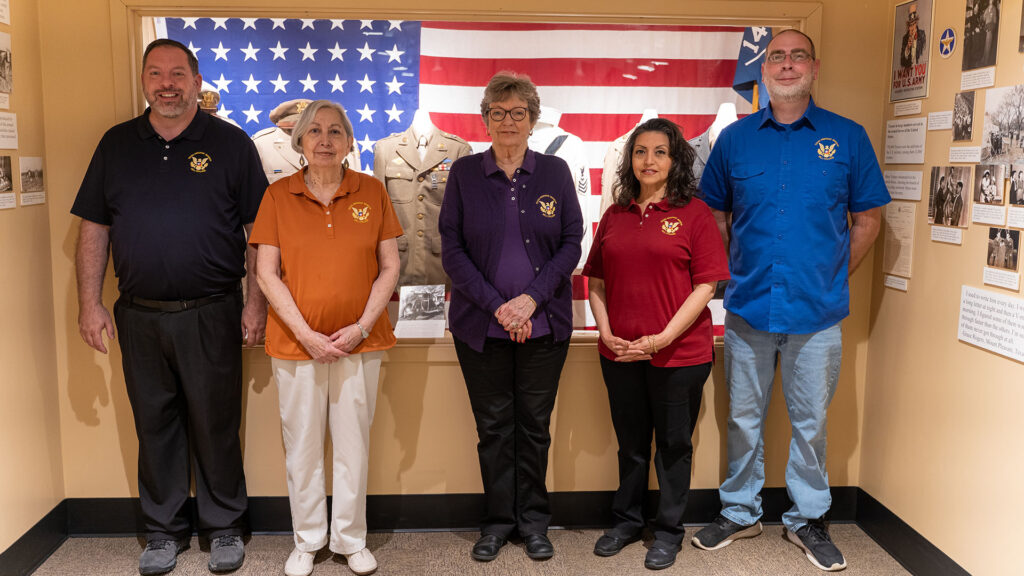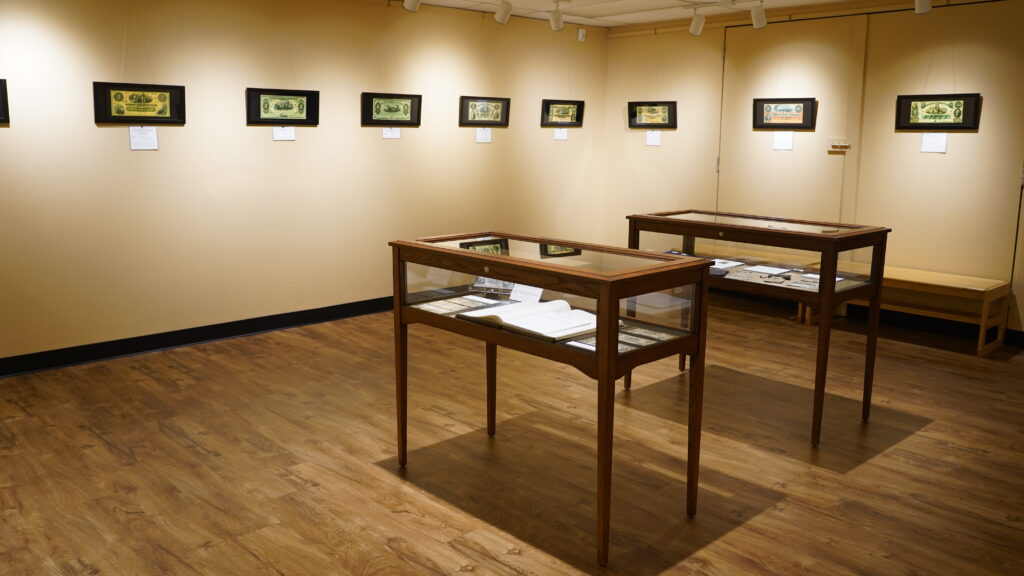Texas Heritage Museum’s (THM) mission is “To explore Texas and Texans during wartime and how those experiences affect us today.” The THM has three divisions: Galleries & Collection, Historical Research Center, and Hill College Press. All the divisions of the museum work to enrich and promote student success and educational experiences for Hill College and K-12 students.
The Texas Heritage Museum at Hill College has achieved accreditation by the American Alliance of Museums (AAM), the highest national recognition afforded the nation’s museums.
“We are immensely proud that the Texas Heritage Museum has received accreditation from the American Alliance of Museums. This achievement marks an important milestone in the history of Hill College. This affirmation of accreditation represents our unyielding commitment to national standards and best practices of museums. Our museum staff and colleagues from across the Hill College community worked tirelessly to achieve this highest national recognition and look forward to continued success in the future,” said John Versluis, Executive Director & Chief Curator of the museum.
Galleries & Collection Division
The THM works to concisely capture visitor experiences and interactions with its exhibits and programs from the Texas Revolution through the Vietnam War. Also, the museum has a temporary gallery for featured museum exhibits from its collections and collaborates with the Hill College art department and provides this temporary gallery to showcase the artwork of regional artists, faculty members, and students.
Historical Research Center Division
The Historical Research Center (HRC) is one of the nation’s finest collection repositories of civil war and other U.S. military history, bringing international distinction to Hill College by providing researchers of Texas and the U.S. with military history, including access to valuable resources that advance scholarly research and education at the college and beyond. The HRC staff responds to the scholarly needs of the Hill College community, as well as other higher educational college and universities’ faculty and students, genealogists, scholars world-wide, and professional peers.
Hill College Press Division
The focus of the press is on historical subjects that relate to the mission of the THM, namely, to explore Texas and Texans during wartime and how those experiences affect us today. Specifically, the range of topics extends to all wars in which the state and its citizens have been involved, as well as to selected regional topics that have potential for enhancing the understanding of the culture and history of north and central Texas in unique and important ways.
As an academic museum, what do you enjoy most about being part of your university/college institution?
We interact daily with students in a rural community college setting who might not have ever had the opportunity to visit a museum or take a college course featuring museum collections. This is very rewarding to introduce these students to new cultures, ideas, diversity, and historical perspectives.
What’s one thing — either industry/work-related or not — that your institution’s team learned in the past month?
The THM team has learned that if you bring food trucks to your museum events the college students will come out in droves and participate!
You’re catering a lunch for the museum team, what is your team’s favorite food?
Texas Barbecue
Tell us about one of the museum’s recent programs that you’ve enjoyed in the past year?
We just finished an exhibit entitled “Currency During Wartime as Art & as Artifacts” which featured representations of currency from the mid-19th through mid-20th centuries. Topics addressed included inflation and the changing imagery of currency. This exhibit was designed to be part of the Hill College’s (QEP) quality enhancement plan entitled “Financial Fitness” for students which is part of the Hill College’s accreditation plan with Southern Association of Colleges and Schools. We had a great event at the museum with Hill College students learning about inflation, and taking part in a scavenger hunt looking for clues in all the currency artwork that was exhibited.
What is your favorite way to connect with your audience?
Texas Heritage Museum’s mission is “To explore Texas and Texans during wartime and how those experiences affect us today.” This mission statement is divided into two parts. Part one of the mission states, “To explore Texas and Texans during wartime…,” and Texas Heritage Museum showcases Texans in war. The second part of the mission states “…how those experiences affect us today,” and the museum works to concisely capture visitor experiences and interactions with its exhibits and programs.
One example are the quotes and stories museum visitors have added to our Vietnam exhibit journal located in the Vietnam War and Texans’ Involvement Exhibit Gallery. Here is one entry from the journal: “South of the Parrots Beak, in the plain of reeds in the Mekong Delta, I captured a wounded North Vietnamese soldier. In his leather pouch, he had a picture of his mother, father and girlfriend or wife. Also, a drawing of a rocket and the moon. It was July 1969, our first landing on the moon. I thought, here we are – 2 lieutenants, he fighting for Ho Chi Minh and me fighting for LBJ, with mothers and fathers and wives with a similar interest, the moon landing. He died. I cried.” ~1st Lieutenant Larry Bulaich, Fort Worth Texas.
As this Vietnam Veteran went through this gallery, he felt and relived his own pain. He went right back to this very moment during the Vietnam War while as he was writing his entry into the exhibit journal. For others, it brings the war to such a different personal level. During 7th grade school tours, I usually pick one student out of the tour group to read this quote out loud to their classmates. Every time while this quote is being read, the gallery becomes really quiet. This is because today’s 7th graders’ grandparents, as well as their teachers’ parents, were the generation who fought and gave sacrifices during the Vietnam War. The school group’s thinking starts to deepen, and I hear comments such as, “my dad or grandfather died in this war,” and “how painful for our human race to be at such odds and yet also be so similar.” These experiences are real, and this is what makes visiting Texas Heritage Museum so unique.
What books or podcasts does your team recommend?
We are currently reading Radical Candor by Kim Scott.
What are your team’s hopes for academic museums in the future?
For academic museums to collaborate with all other academic departments at their institutions and become the central hub to celebrate cultures, ideas, diversity, and historical perspectives through exhibits and educational programming.
Bonus: What’s your favorite museum joke? Or a fun fact about your museum?
Why is history like a fruit cake? It’s full of dates!



